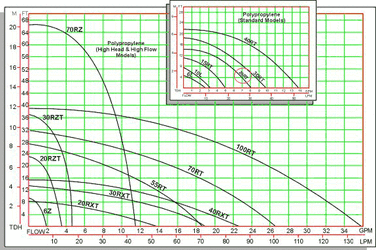Eventually i want to understand the importance of output characteristics of the pump to overall water cooling performance. I tried to search for such a thread or article, but did not find one that addresses all the chars. If i missed it' please give me a link, so i won't try to re-envent the wheel.
Pumps characteristics:
Pumps are normally rated in gallons per hour at a certain height. Feet pressure is the number of feet a pump can push straight up in a 1" column. A pump that delivers 500 gallons per hour at 5 feet will deliver 500 gallons vertically through 5 feet of 1" pipe. A pump that has a 'max head' number or 'shutoff' number refers to the number of feet a pump can deliver before it completely shuts down.
(from http://www.aquadirect.com/catalog/pumps/moreinfo/pumps.htm)
-----------------------
Some people say high flow rate of the pump is the important, another that the pressure on pumps output is the most imoprtant, and i've never seen considerations about shutoff of the pump.
From what pump will WC system benefit the most? (considering the output characteristics)
Please describe in details.
Pumps characteristics:
Pumps are normally rated in gallons per hour at a certain height. Feet pressure is the number of feet a pump can push straight up in a 1" column. A pump that delivers 500 gallons per hour at 5 feet will deliver 500 gallons vertically through 5 feet of 1" pipe. A pump that has a 'max head' number or 'shutoff' number refers to the number of feet a pump can deliver before it completely shuts down.
(from http://www.aquadirect.com/catalog/pumps/moreinfo/pumps.htm)
-----------------------
Some people say high flow rate of the pump is the important, another that the pressure on pumps output is the most imoprtant, and i've never seen considerations about shutoff of the pump.
From what pump will WC system benefit the most? (considering the output characteristics)
Please describe in details.

